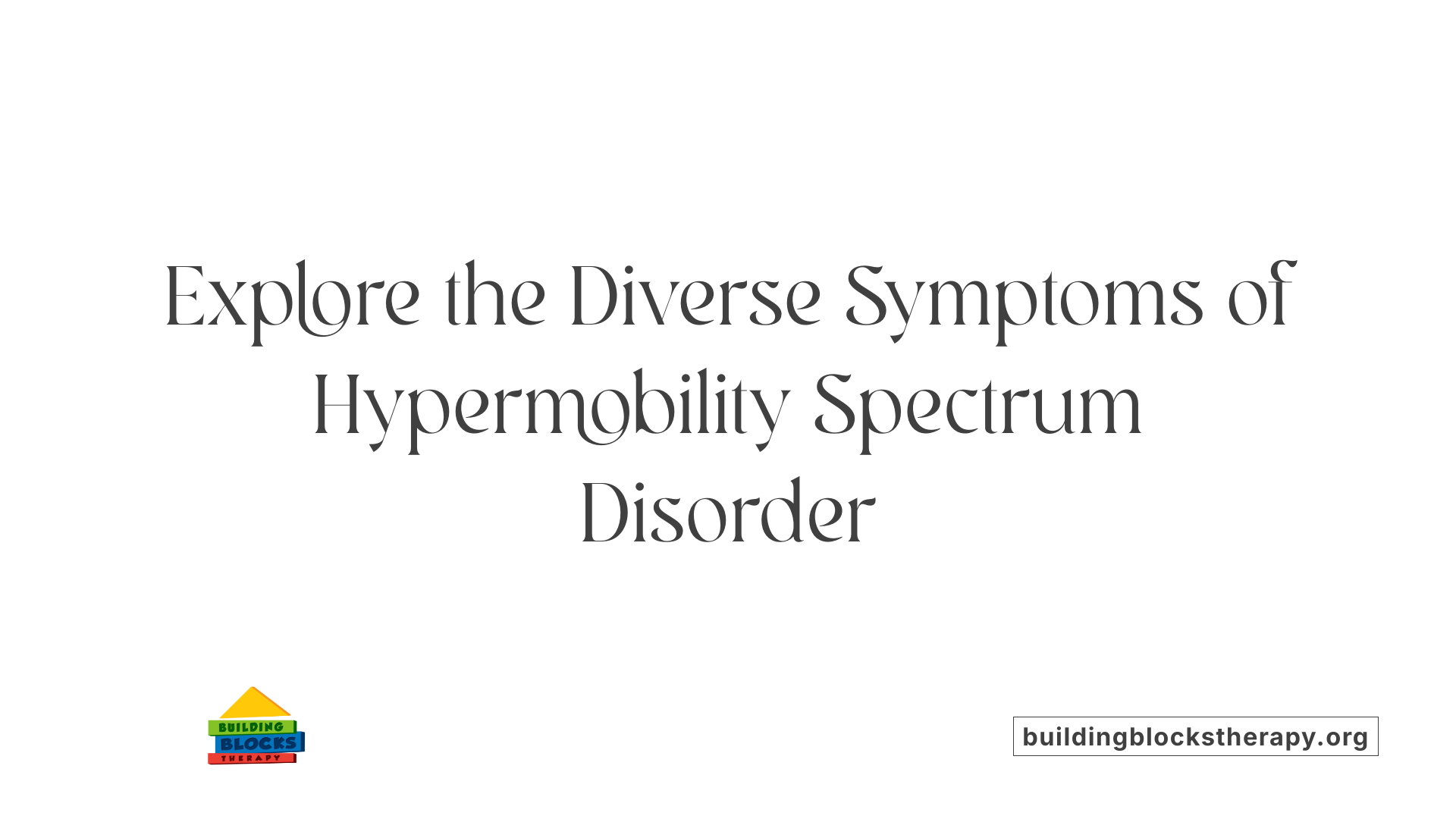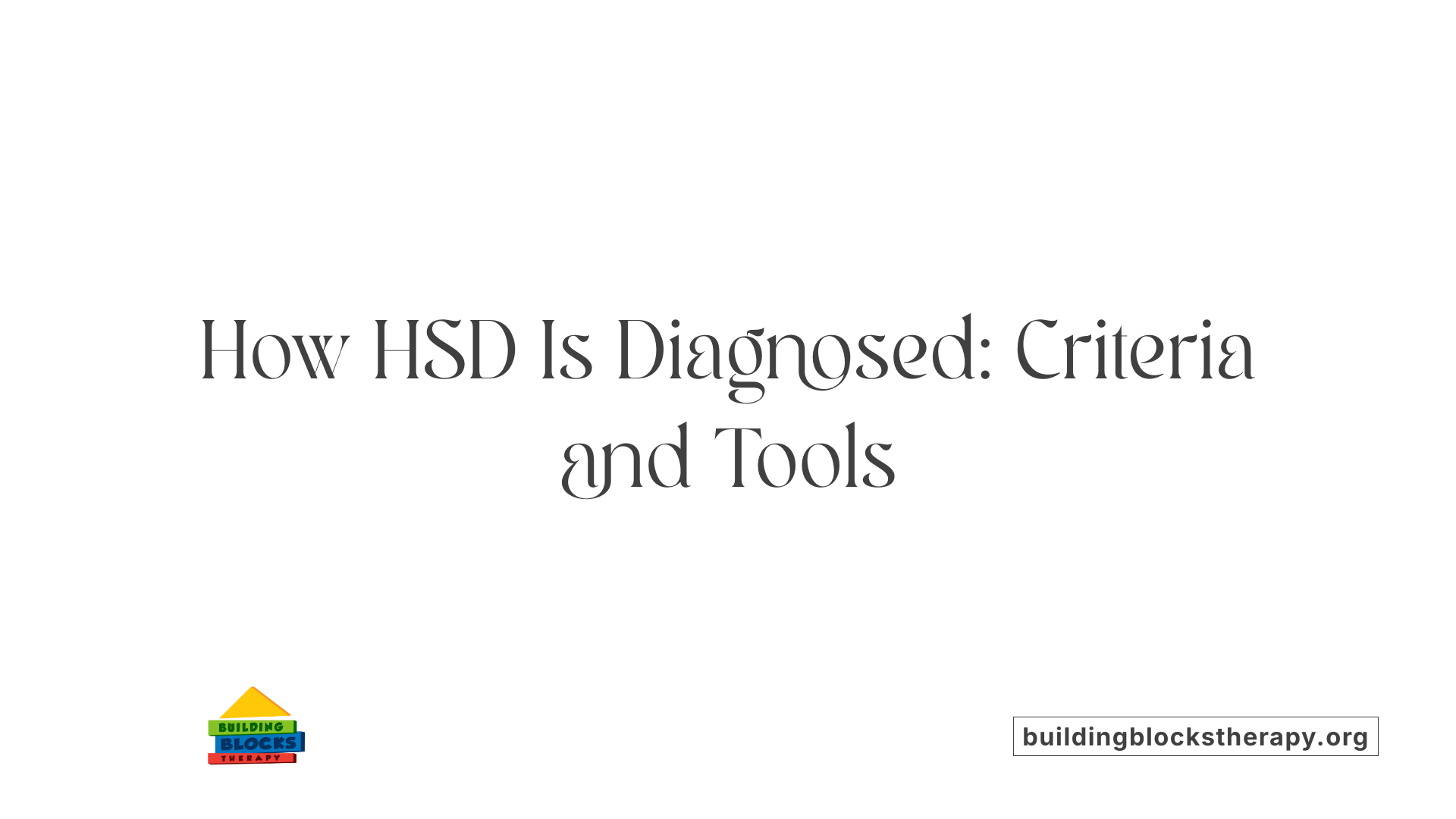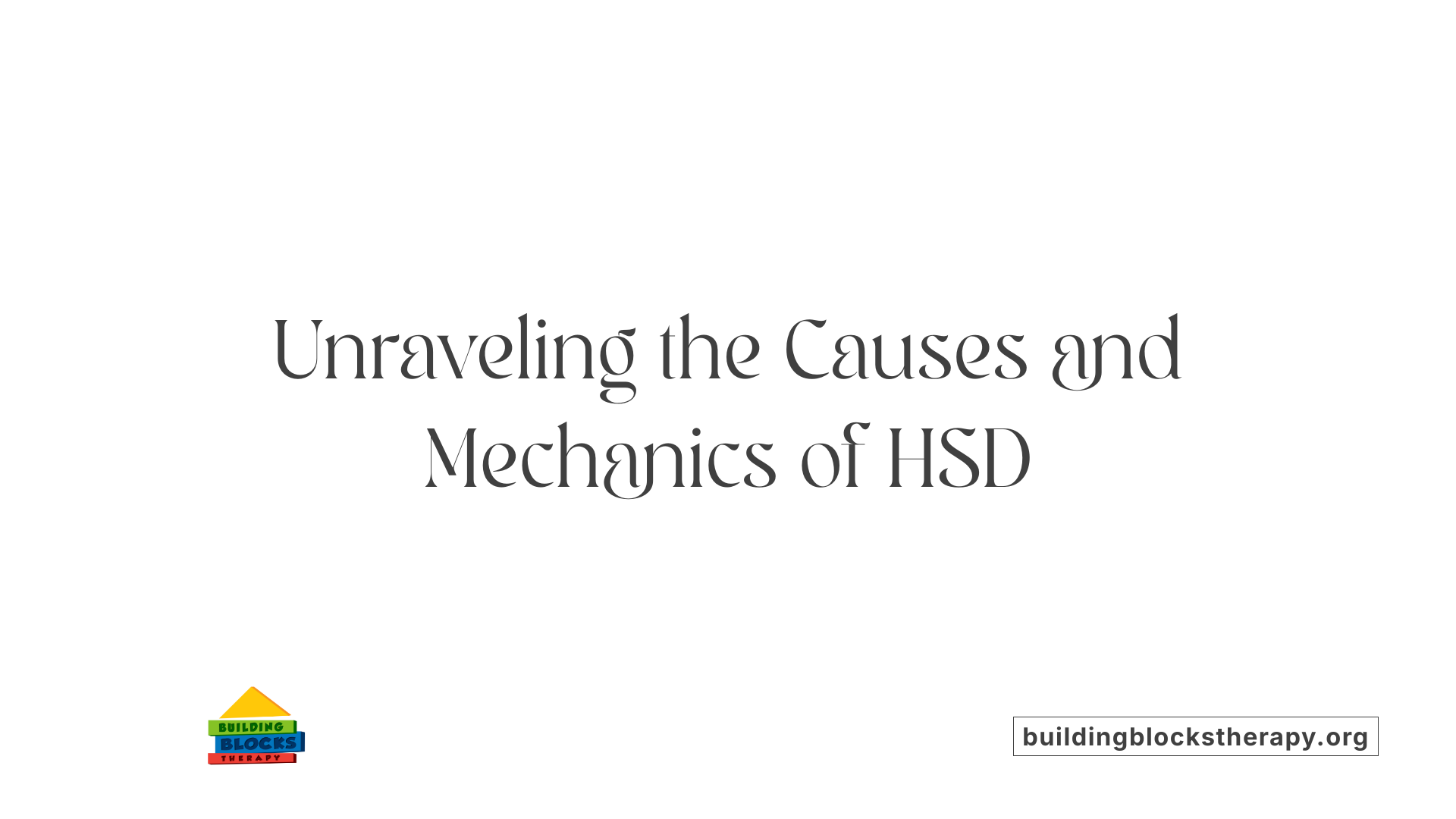What Is Hypermobility Spectrum Disorder
Understanding the Spectrum of Connective Tissue Hyperflexibility

Unveiling Hypermobility Spectrum Disorder: An Overview
Hypermobility Spectrum Disorder (HSD) is a heritable condition affecting connective tissues, leading to joint hypermobility and a diverse array of symptoms. Commonly misunderstood as mere flexibility or
What Is Hypermobility Spectrum Disorder?

What is Hypermobility Spectrum Disorder (HSD)?
Hypermobility Spectrum Disorder (HSD) is a condition involving joints that can move beyond their normal limits. It is a heritable disorder affecting connective tissues that give support and structure to the body. People with HSD often experience joint hypermobility along with symptoms like musculoskeletal pain, fatigue, and hypersensitivity of nerves.
Unlike individuals who are simply very flexible or “bendy” without symptoms, those with HSD have secondary problems caused by loose or weak connective tissues. These problems include joint dislocations, repeated injuries, and systemic issues such as problems with the autonomic nervous system, gastrointestinal discomfort, and skin that stretches easily.
How is HSD different from asymptomatic hypermobility?
Many people have hypermobile joints without any symptoms; this is called asymptomatic hypermobility. In contrast, HSD involves symptoms and functional issues, making it a clinical concern rather than just a trait.
What are the subtypes and classification of HSD?
HSD is classified into several subtypes based on which joints are affected and how widespread the hypermobility is. These include:
| Subtype Name | Description | Typical Features | Example Joints Involved |
|---|---|---|---|
| Generalized HSD | Involves most joints across the body | Widespread hypermobility, pain | Knees, elbows, shoulders |
| Localized HSD | Involves specific areas | Pain and instability confined to a region | Wrist, ankle |
| Peripheral HSD | Affects joints in the limbs | Fatigue, joint injuries | Hands, feet |
| Historical HSD | Past hypermobility issues without current symptoms | Symptoms may have improved over time | Any |
Connection to connective tissue abnormalities
HSD results from genetic changes affecting connective tissues, mainly involving collagen, which is crucial for tissue strength and elasticity. These abnormalities cause joints to be more flexible and prone to injury.
How is HSD diagnosed?
Diagnosis relies on clinical evaluation, including a detailed medical history and physical examination. A common assessment tool is the Beighton score, which involves a series of movements measuring joint flexibility. A score of 4 or more out of 9 typically indicates hypermobility.
Additional assessments may include questionnaires about symptoms, and examinations of skin, eyes, and heart to look for connective tissue signs. Because there are no specific blood tests for HSD, diagnosis is primarily based on symptoms and physical findings.
How is HSD related to Ehlers-Danlos Syndrome (EDS) and other disorders?
HSD is part of a spectrum of connective tissue conditions that includes various types of Ehlers-Danlos Syndrome (most commonly hypermobile EDS) and other disorders like Marfan syndrome or osteogenesis imperfecta. While EDS involves specific genetic mutations and broader systemic features, HSD generally presents with similar but less severe or more localized symptoms.
Understanding the differences between HSD and EDS is important since management may vary, and some conditions can overlap or evolve over time.
This spectrum and the evolving research underscore the importance of tailored, multidisciplinary care focusing on symptom relief and injury prevention.
The Range of Symptoms in HSD
 Hypermobility Spectrum Disorder (HSD) manifests through a broad array of symptoms that affect multiple body systems. One of the most noticeable features is joint hypermobility and instability, which can lead to frequent dislocations, subluxations, and soft tissue injuries. This joint laxity often results in persistent musculoskeletal pain and can cause joint stiffness, making movement difficult and uncomfortable.
Hypermobility Spectrum Disorder (HSD) manifests through a broad array of symptoms that affect multiple body systems. One of the most noticeable features is joint hypermobility and instability, which can lead to frequent dislocations, subluxations, and soft tissue injuries. This joint laxity often results in persistent musculoskeletal pain and can cause joint stiffness, making movement difficult and uncomfortable.
Many individuals with HSD also experience significant fatigue and diminished energy levels. This exhaustion can be chronic, affecting daily activities and overall quality of life. Neurological symptoms are common as well, including hypersensitivity—where nerves become overly responsive to stimuli—and issues with proprioception, or the body's ability to perceive its position and movement in space. These sensory disturbances can cause difficulties with coordination, balance, and an increased risk of falls.
Systemic symptoms also frequently occur. Gastrointestinal problems such as constipation, bloating, or irritable bowel syndrome are common, along with dermatologic traits like stretchy, fragile skin. Autonomic nervous system dysfunction may present with symptoms like dizziness on standing, lightheadedness, and bladder or bowel issues. The skin can also exhibit easy bruising and slow wound healing.
Mental health is another important aspect, as anxiety, depression, and mood disorders often co-occur with HSD. These can be related to the chronic pain, fatigue, and physical limitations experienced by affected individuals.
Overall, HSD is characterized by a complex presentation that includes joint symptoms, systemic health concerns, and neurological as well as psychological impacts. Recognizing this diverse symptom profile is essential for prompt diagnosis and appropriate management, supporting individuals with tailored treatment plans that address their specific challenges.
Diagnosing Hypermobility Spectrum Disorder
 Hypermobility Spectrum Disorder (HSD) is mainly diagnosed through careful clinical evaluation involving both detailed medical history and physical examination. A primary tool used is the Beighton score, which assesses joint hypermobility through nine specific maneuvers. A score of 4 or more out of 9 often indicates generalized hypermobility in adults. However, some individuals with HSD may have lesser scores but still experience symptoms associated with joint laxity.
Hypermobility Spectrum Disorder (HSD) is mainly diagnosed through careful clinical evaluation involving both detailed medical history and physical examination. A primary tool used is the Beighton score, which assesses joint hypermobility through nine specific maneuvers. A score of 4 or more out of 9 often indicates generalized hypermobility in adults. However, some individuals with HSD may have lesser scores but still experience symptoms associated with joint laxity.
In addition to the Beighton score, clinicians may employ the five-part questionnaire (5PQ). This screening tool helps identify signs of hypermobility and can support the diagnosis when used alongside physical examination findings.
It is essential to differentiate HSD from other connective tissue disorders that also cause joint laxity, such as Ehlers-Danlos syndrome (EDS), Marfan syndrome, and osteogenesis imperfecta. This involves a thorough review of physical features, family history, and sometimes genetic testing, especially if specific syndromes are suspected.
The process also includes excluding other syndromes that share overlapping features, ensuring that the diagnosis is accurate. This is particularly important since treatment and management depend on correctly identifying the underlying condition.
Current diagnostic criteria, such as the 2017 guidelines, emphasize the importance of a phenotypic assessment. They integrate the clinical signs observed, family history, and the presence or absence of systemic features. As research advances, these guidelines evolve, refining how clinicians classify and diagnose HSD.
Overall, diagnosing HSD is a comprehensive process that combines clinical judgment with standardized assessment tools, aiming to recognize the spectrum of hypermobility and associated symptoms while ruling out other conditions.
Management and Treatment Strategies for HSD
 Treating Hypermobility Spectrum Disorders (HSD) requires a comprehensive approach that addresses symptoms and aims to improve daily functioning. A team of healthcare professionals, including physiotherapists, doctors, and mental health specialists, collaborates to develop personalized care plans.
Treating Hypermobility Spectrum Disorders (HSD) requires a comprehensive approach that addresses symptoms and aims to improve daily functioning. A team of healthcare professionals, including physiotherapists, doctors, and mental health specialists, collaborates to develop personalized care plans.
Physical therapy is at the core of management. It focuses on strengthening the muscles around hypermobile joints, which helps stabilize these joints and reduce the risk of dislocation or injury. Exercises are typically low-impact, such as swimming, cycling, and gentle resistance training. Proprioception exercises—those that improve awareness of joint position—are also essential to prevent falls and improve coordination.
Medication options mainly target pain relief and systemic symptoms. Non-steroidal anti-inflammatory drugs (NSAIDs), acetaminophen, and in some cases, antidepressants or anticonvulsants are used to manage chronic pain, headaches, or nerve hypersensitivity.
Lifestyle changes are equally important. Patients are encouraged to adopt activity pacing—balancing activity with rest—to avoid overstretching damaged tissues. Maintaining a healthy weight can reduce joint stress. Good sleep hygiene supports overall well-being and pain management.
Psychological support and mental health care play a vital role, especially given the high prevalence of fatigue, mood disorders, and anxiety among individuals with HSD. Counseling or cognitive-behavioral therapy can help cope with chronic symptoms.
Supportive therapies such as braces, splints, or orthoses can provide stabilizing support for joints. In cases where joint damage or vascular issues are severe, surgical options may be considered, but these are approached cautiously due to the fragile connective tissue characteristic of HSD.
Overall, managing HSD demands a tailored, multidisciplinary strategy that promotes joint stability, reduces pain, and enhances quality of life.
Differentiating HSD from Related Disorders
How does Hypermobility Spectrum Disorder differ from Ehlers-Danlos Syndrome?
Hypermobility Spectrum Disorder (HSD) and Ehlers-Danlos Syndrome (EDS), especially the hypermobile type (hEDS), are related conditions that both involve joint hypermobility caused by connective tissue abnormalities. However, they are distinguished by specific diagnostic criteria and associated features.
HSD is diagnosed when an individual exhibits significant joint hypermobility and related symptoms like pain and joint injuries but does not meet all the criteria for EDS. In contrast, hEDS is a hereditary disorder that includes a broader set of systemic manifestations such as skin hyperextensibility, easy bruising, and abnormal scarring.
Shared symptoms like joint pain, frequent dislocations, and tissue laxity are common to both. The main difference lies in the systemic findings and family history, which are more characteristic of hEDS.
The 2017 classification updates emphasize that HSD is part of a spectrum, capturing cases with hypermobility and symptoms that fall short of full EDS diagnostic standards.
Management strategies are similar for both conditions, focusing on physical therapy, pain management, and lifestyle adaptations to protect joints and improve quality of life.
Overall, the classification aims to clarify diagnosis, facilitate research, and tailor treatment to individual needs.
| Aspect | HSD | hEDS | Diagnostic Focus | Systemic Features | Inheritance | Management | | --- | --- | --- | --- | --- | --- | --- | | Definition | Broad spectrum of hypermobility-related symptoms; no genetic confirmation | Hereditary, with systemic tissue involvement | Symptoms + physical exam | Skin hyperextensibility, scarring, and multisystem issues | Autosomal dominant, often familial | Symptom relief, physical therapy | | Main features | Joint hypermobility, pain, dislocations | Hypermobile joints, skin laxity, systemic symptoms | Clinical assessment | Less specific physical signs without systemic features | Similar approaches focusing on functional improvements |
Understanding these distinctions helps healthcare providers give accurate diagnoses and personalized treatments, improving patient outcomes.
Causes and Underlying Mechanisms of HSD

What are the causes and underlying mechanisms of HSD?
Hypermobility Spectrum Disorders (HSD) are complex conditions with multifaceted origins. Although the precise causes are not fully clarified, current understanding points to systemic collagen abnormalities as a primary factor. Collagen is a crucial protein that provides structural support to connective tissues such as ligaments, skin, blood vessels, and internal organs.
Genetic influences play a significant role in these disorders. Many cases are believed to follow a weak autosomal dominant pattern, meaning a person may inherit a tendency towards connective tissue fragility from one parent. However, specific gene mutations linked directly to HSD have yet to be definitively identified.
The structural weakness in connective tissues results in joint hypermobility, ligament laxity, and tissue fragility, which can lead to joint instability and injury. Environmental factors, including biomechanical overloading—such as repetitive stress, trauma, or injury—exacerbate these issues. Over time, such overuse strains the already compromised tissues, making dislocations, soft tissue injuries, and chronic pain more likely.
Neurological factors are also important in understanding HSD. Central sensitization, a condition where the nervous system becomes overly responsive to pain signals, can contribute to the widespread musculoskeletal pain often reported by patients. Altered pain processing and proprioception (body awareness) deficits further compound the symptoms.
The development of HSD likely results from an intricate interaction between these genetic, biomechanical, and neurological elements. While research continues to uncover specific pathways and gene mutations, much remains to be understood. Ongoing studies aim to clarify how these diverse factors intersect and how they influence the severity and variability of symptoms in different individuals.
Understanding these underlying mechanisms is essential for improving diagnostics and developing more targeted treatment options, ultimately helping patients manage their symptoms more effectively.
Living with and Managing HSD
While Hypermobility Spectrum Disorder presents unique challenges due to joint hypermobility and systemic symptoms, with proper diagnosis, tailored management, and a multidisciplinary approach, individuals can lead active, fulfilling lives. Ongoing research continues to improve understanding and treatment options, emphasizing the importance of awareness and early intervention. Patients are encouraged to work closely with healthcare professionals to develop personalized care plans that address their specific needs.
References
- What is HSD? - The Ehlers Danlos Society
- Hypermobility spectrum disorder - Wikipedia
- Diagnosis and Management of Hypermobility Spectrum Disorders in ...
- Joint hypermobility syndrome - NHS
- Joint Hypermobility Syndrome: Symptoms, Causes, Diagnosis ...
- Doctor Raises Awareness for Hypermobility Spectrum Disorder
- Hypermobility spectrum disorders: A review - PMC - PubMed Central
- Rehabilitation Services – Hypermobility Spectrum Disorder (HSD)
- Hypermobility Spectrum Disorders | Patients & Families - UW Health





